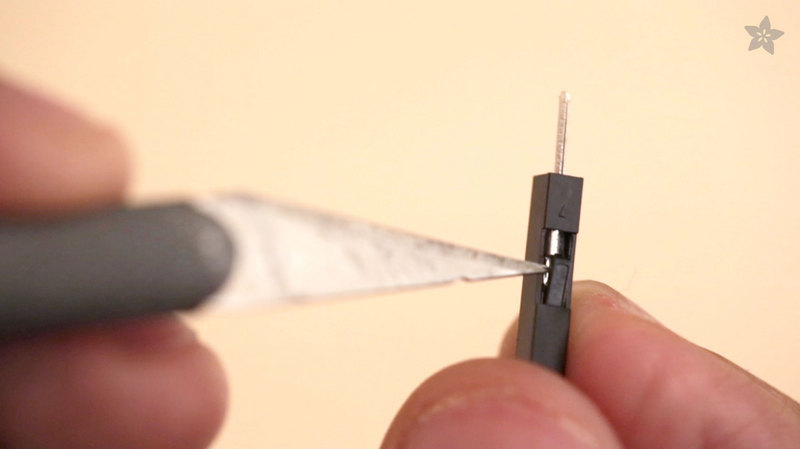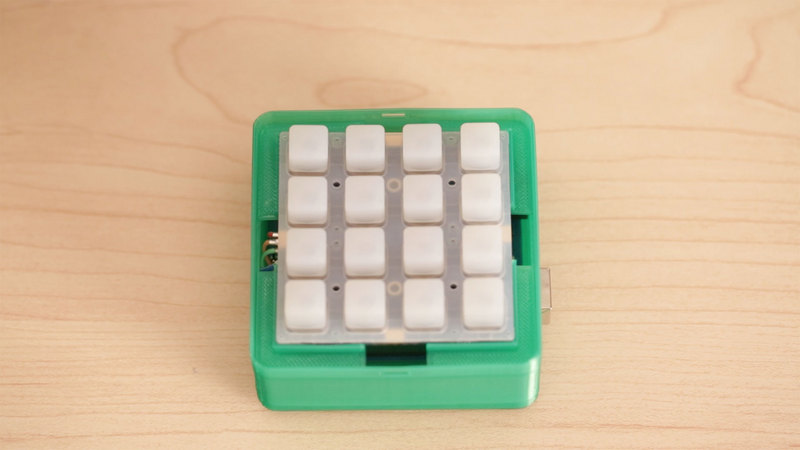LEDs
Get creative and choose a colored pattern for your LEDs. The long terminal pin of the LED goes to the +positive pin on the Trellis PCB. Ensure your LEDs are correctly positioned to the PCB before soldering. It's also nice to check to see if your LED work by keeping a rechargeable coin cell battery for testing.Soldering
For a clean soldering process, try to soldering the LEDs one by one, and then cutting the access terminal pins from the LEDS. For a more comfortable process, use a Panavise Jr. to keep the Trellis PCB in place while your solder. A Third Helping hand can assist you in holding the terminal pins of the LEDs in place while your solder.To ensure the jumper wires don't get in the way inside of the enclosure, we need to:
- Remove the protective guard from both sides of the jumper wires (x-acto knife helps)
- Trim one side of the jumper wire pin, leaving a small piece for the Trellis connections

































